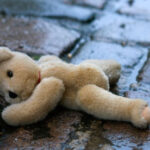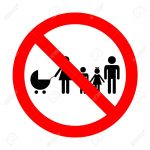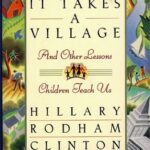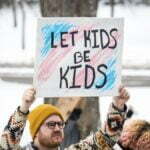The Battle For Our Children
These are not good days for our children. Most adults can simply compare their own childhoods with those of today’s young people to see that a major shift has taken place in our society. We have gone from being a child-friendly society to one in which children are very much at risk.
Indeed, one gets the distinct impression from reading the daily newspapers that society has declared war on our children. It seems that adults (or portions of the adult community) have declared open season on our young people. Almost on a daily basis we encounter tragic stories of children being used, abused and ripped off, often for someone else’s gain. Drug dealers, the sex-industry, abortion providers, advertisers, all seem intent on exploiting our young people for their own ends.
One does not have to look far to find evidence of this. Consider these news items gleaned from newspapers over the last 12 months (as of July 1998):
-A recent report found that there are around 3000 children aged 10 or younger who are selling sex to get money, buy drugs or pay for housing.
-A blitz on street drug dealers in Melbourne rounded up over 500 people, including a thirteen-year-old girl with an eight-hit-a-day heroin habit.
-Nearly one in three Australian adolescents smoked marijuana in the past 12 months.
-Children as young as five are to be the targets of a new nation-wide drug information campaign.
-More than 40 per cent of Australian children are now living in poverty.
-Almost half of Australia’s secondary students lost their virginity before graduating from high school in 1997.
-Every three days at least one teenager under 15 becomes a mother.
-There are about 28,000 teenage pregnancies in Australia each year.
-Half of all teen pregnancies end in abortion.
-Pupils as young as nine are accessing hard core pornography on classroom computers.
-Most 16 and 17-year-olds drink alcohol and one in five is a regular heavy drinker.
-The proportion of teen drinkers who binge drink has nearly doubled in a decade.
-Recently Victoria’s youngest suicide, a nine-year-old boy, killed himself after watching a horror film.
-Kids Help Line reports that children are concerned about gangs, cults and loneliness, in addition to relationship problems between family, friends and partners.
-Home alone kids are making 1000 calls a week to Kids Help Line.
-There are 1.1 million children who live with only one of their natural parents.
-One in six primary school-aged children regularly look after themselves or are cared for by a sibling under 15. These children were left alone for an average of 5.7 hours a week
-About one in ten children will experience depression before the age of 14, according to medical experts.
-Hundreds of Victorian schools are resorting to surveillance cameras and armed security guards to combat vandalism, theft and drug dealing.
-About 10 per cent of Victorian school children in Years 3 and 5 are unable to meet basic standards of reading and writing.
-One in ten knife attacks in Victoria are carried out by children under 16.
-Children as young as 11 are buying drugs on credit in the schoolyard. And they are trading CDs, clothing, bikes and even sexual favours for their supplies.
-Children are getting hooked on heroin at ever younger ages, with 16 now the average age for beginners.
-Children as young as 6 are reported to be trying heroin.
-Parents who suspect their children are using drugs can hire a sniffer dog to search homes.
-Experts are urging schools to include gambling education because children are being exposed to gambling at ever younger ages.
-Children as young as seven are unhappy with the shape of their bodies, with some at risk of developing eating disorders.
-Children as young as seven are starving themselves and even throwing up, in order to achieve the perfect body shape.
-In Brisbane a 15-year-old boy died of anorexia, after a two year battle with the illness.
-More than 2000 children a day log on to the Internet each day to find legal advice on when they can leave home, when they can have sex, and which parent they can live with after divorce.
-A 14-year-old boy sold heroin recently to raise money to buy a computer game.
-Children as young as 12 are being illegally sold cigarettes at milk bars, a Victorian study has found.
-The number of obese adolescents in Australia has doubled in the last ten years.
-Babies as young as one week old are visiting psychiatrists in Victoria.
-Girls as young as 12 are turning to backyard tattoo artists to flaunt the designs sported by their favourite movie or pop stars.
-A popular author for teenagers has written a new book telling teenagers to visit brothels. The book, by John Marsden, also tells them that when girls say no they do not always mean no.
-Advertisers have been so successful, that most kids today demand nothing less than name brands, irrespective of the cost.
-Pens that look like blood-filled syringes are on sale again, even though they were previously removed from shelves.
-More than half of Victorian Year 8 students have been bullied recently.
The list could go on and on. Our schools serve up large doses of scary scenarios about environmental doom and gloom, AIDS awareness, suicide education, etc. The news media dish out a steady diet of tragic and gruesome stories. Children are increasingly being exposed to sexually explicit material at younger and younger ages, material which many of their parents would never have seen in a lifetime. Popular culture, fuelled by Hollywood and Madison Avenue, is treating our children as mere commodities, exploiting them for every last dollar.
The heavy demands being placed on our children by Western consumerism are ironically being offset by the same materialistic culture. Affluent Western culture has made it possible for our children – indeed, all of us – to live longer, healthier and more prosperous lives than at any other time. Yet with our material abundance has come a stagnation of soul and spirit.
Social scientist Richard Eckersley has studied the attitudes of children and teenagers for over a decade. He believes that behind the growing trends of youth homelessness, youth suicide, drug abuse and other problems lies a “failure to provide a sense of meaning, belonging and purpose in our lives, and a framework of values.” He notes that many young people “have lost a strong belief in anything that transcends the material world and that might sustain them in the face of its dangers and disappointments”. Economic rationalism, material abundance, and rugged individualism, in other words, are not enough to sustain and protect our hurried and harassed young people.
Politicians, educators and youth idols all need to bear in mind that the condition of tomorrow’s society will be determined by the character of today’s young people. Unless we can find a way to let kids be kids, the prospects for future generations does not look good.
Turning the Tide
However, there are two ways that we can turn things around. There are two factors that, while not foolproof, will go a long way in ensuring that our children are protected and given the means to make it in a hostile world. These two factors are faith and family.
Having a strong family background (preferably with both a mum and dad) has been shown over and over again to be a real bulwark against many of the problems and pitfalls our young people face. There are literally hundreds of studies from here and overseas that show the advantages children receive when raised in a two-parent family. (For those who want a full summary of the evidence, please see my research paper, “The Case for the Two-parent Family”.)
Let me mention just one recent study. A total of over 12,000 adolescents from the United States were assessed on eight key risk behaviours. The study, reported in the Journal of the American Medical Association, found this amazing conclusion: Parent-family connectedness, along with perceived school connectedness, were protective against every health risk behaviour except history of pregnancy. That is, close family ties, along with a sense of belonging at school, were found to be the most important factors in keeping kids out of, or reducing, such activities as substance abuse, suicidal thoughts and behaviours, violence, and age of sexual debut. Strong family ties reduce the risk in seven of eight high risk health hazards. That is a pretty strong endorsement for promoting the family.
The second main factor in preventing a rash of problems in young people is personal faith. Individuals who have a strong Christian faith will have much better defences at their disposal to cope with the worries, stresses and fears of growing up. It is this abandonment of belief, coupled with a rise in belief in an evolutionary, purposeless existence, which has simply taken away a sense of hope and meaning for so many young people. As Eckersley expresses it, our young people “lack a social and spiritual context, a set of clear reference points, to help them make sense of life and their place in the world. They have no ideal to believe in, nothing to convince them to subordinate their own personal interests to a higher common goal”.
Parents, therefore, have a grave responsibility to their children. Not only must we offer them a strong and supportive home environment, but we must also instil in them the faith of our fathers. If we wish to raise our children to grow up to be solid, stable and secure individuals who will in turn make a difference in their communities, we need to recommit ourselves to faith and family values, both in theory and in practice. May God give us the grace to do so.
(A complete set of references – 43 footnotes – are available upon request.)
[1639 words]



















